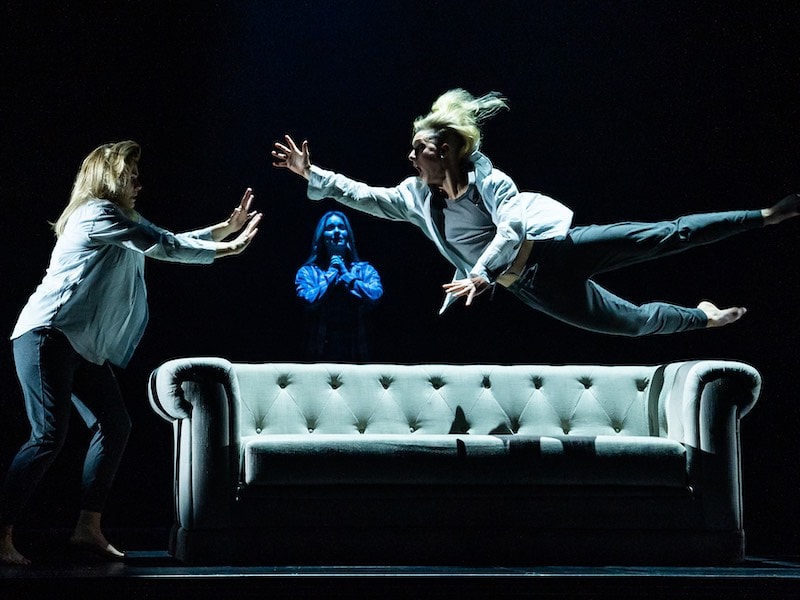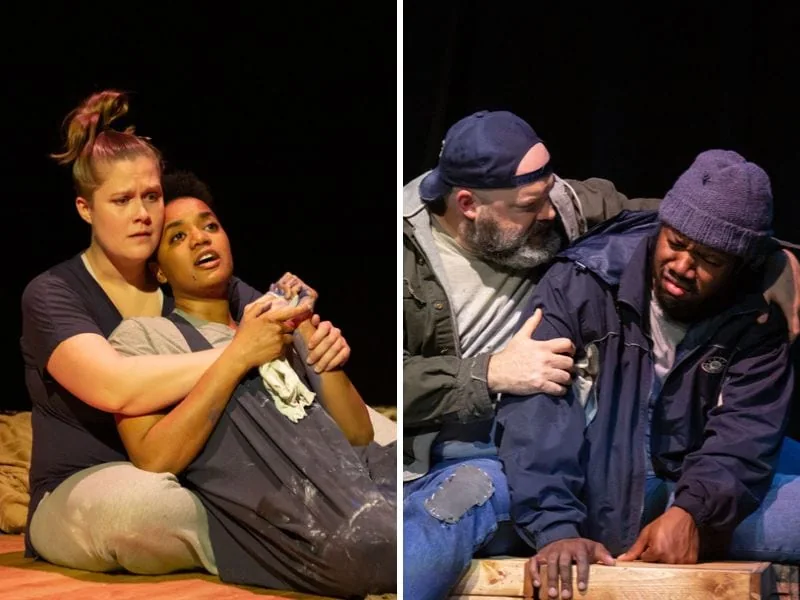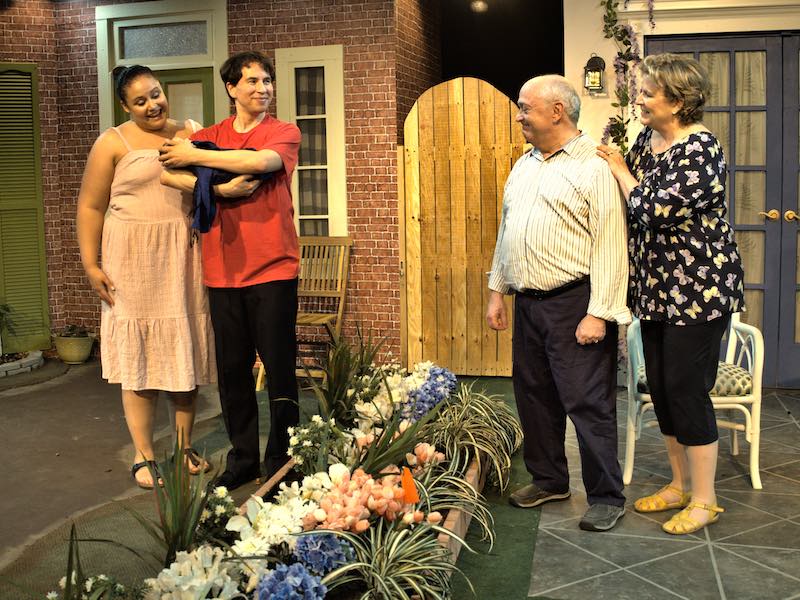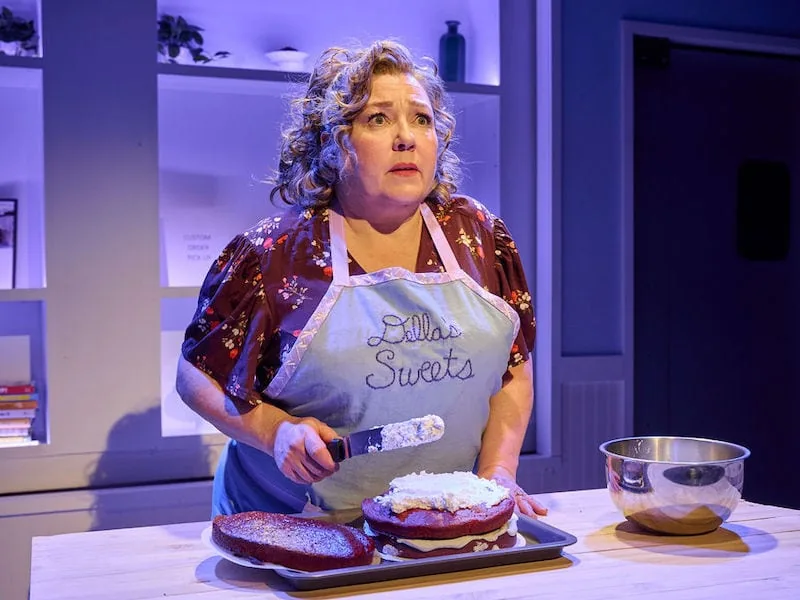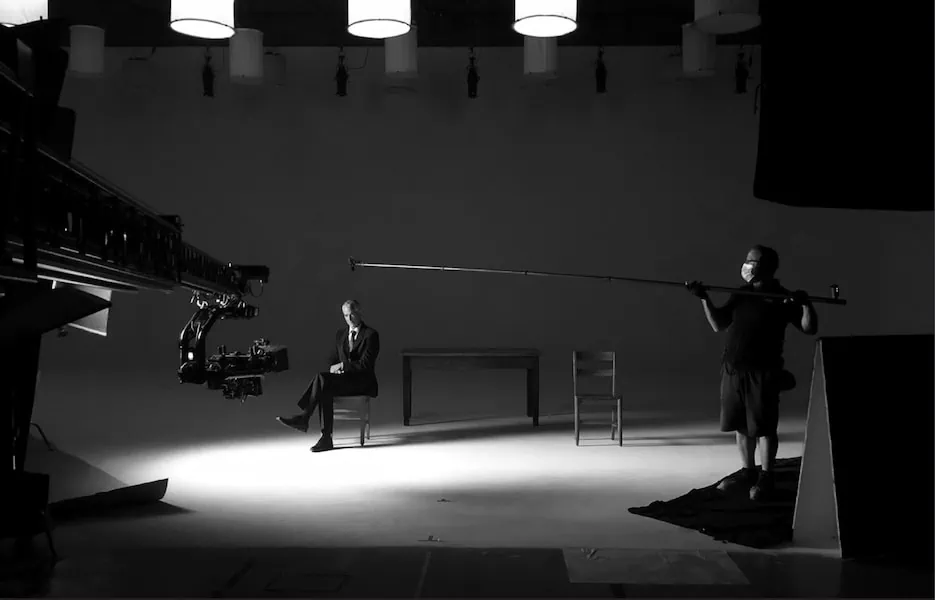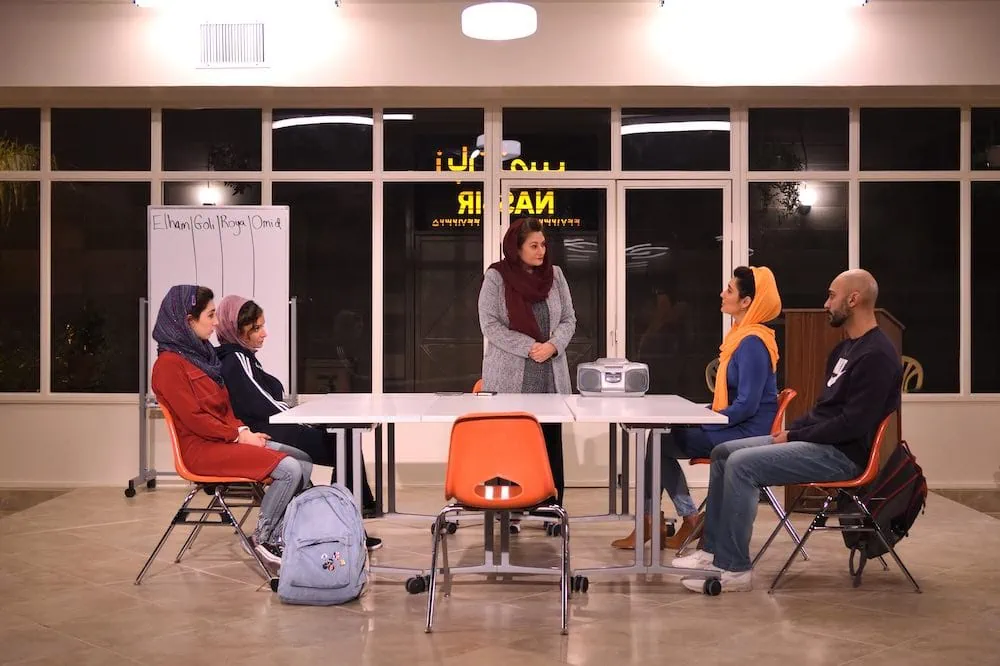By D.R. Lewis
This article was originally published in DC Theater Arts on March 16, 2023, here.
Since Alanis Morissette’s landmark album Jagged Little Pill was released in 1995, it has served as the soundtrack to innumerable breakups, angsty teenage phases, and bouts of nostalgia. Even so, it might not be the first album to come to mind when pursuing a fun night in the theater. But a series of strong performances and fresh takes on much-loved hits make this Jagged Little Pill, a musical built around selections from Morissette’s recording catalog, a bit easier to swallow. The show’s first national tour runs at the National Theatre through March 26.
Jagged Little Pill follows a year in the life of Mary Jane Healy, an upper-class stay-at-home mother, and her family: workaholic husband Steve (Chris Hoch), overachieving son Nick (Dillon Klena), and social justice advocate daughter Frankie (Lauren Chanel). Over the course of the show, the Healys are forced to confront the secrets that lie just below the surface of their carefully curated, picture-perfect lives.
Fans of Morissette’s music will not leave disappointed. With orchestrations and arrangements by Tom Kitt (who won two Tony Awards and a Pulitzer Prize for his work on Next to Normal), the cast performs the resonant score with the kind of raw emotion and vigor that has made the Jagged Little Pill album a perennial favorite for need-a-good-cry, deep-in-your-feelings moments. Jagged Little Pill makes a strong effort to sensibly intersperse nearly two dozen Morissette songs within its ambitious plot. Unlike some jukebox (or in this case, CD player?) musicals, Jagged Little Pill does not evoke the feeling of a concert (even though Justin Townsend’s lively light design sometimes errs on that side). Rather, it claims and holds its place firmly as a piece of musical theater.
The show makes clear from the start that it intends to tackle a combination of heady topics that would daunt most writers: adolescence, queerness, classism, racism, adoption, addiction, and sexual assault among them. After an initial whirlwind of shaky exposition, the show eventually settles into a rhythm that steadily gains dramatic steam and hits its stride in the second act. That book writer Diablo Cody, perhaps best known for penning the 2007 film Juno, manages to weave all of these topics into a cohesive, compelling, and mostly satisfying resolution by the final curtain is an impressive feat. She doesn’t, however, completely succeed in avoiding awkward cliches and trite turns of phrase that too often creep into the voices of the teenage characters. Still, the Tony-winning book shines brightest in the humanizing witticisms that pass quickly, but with great impact. One zinger about Talbots garners a particularly hearty laugh.
Anchoring the production is an exquisite Heidi Blickenstaff as Mary Jane. Blickenstaff moves about the stage with a reassuring confidence that you’d expect from the character she plays, but never lets us forget for a moment that she could unravel at the drop of a hat. Blickenstaff masterfully pivots between quiet, considered moments and brief explosions of unrestrained emotion. One scene where she quite literally wrestles with her addiction is breathtaking.
Blickenstaff is flanked by solid performances from Hoch and Klena. Chanel’s Frankie brings refreshing conscience to the production, even in her moments of naivete. As Frankie recounts the ignorant mistakes her white adoptive parents made in raising her as a Black child in their homogeneous community, Chanel beautifully demonstrates the character’s deep desire for belonging and understanding in both spoken and nonverbal ways. Her sweet performance of “Ironic,” perhaps Morissette’s most famous song, is a highlight of the night.
Standout supporting performances are delivered by Jade McLeod as Jo and Allison Sheppard as Bella. Sheppard perfectly captures the kind of fear that lies in the brief period between adolescence and adulthood, when we are expected to deal with the consequences of life’s most awful moments, but are unequipped to do so. McLeod brings the house down in both the tender “Hand in My Pocket” and fierce “You Oughta Know,” and, aside from Blickenstaff, is the most adept at delivering Cody’s writing with spot-on timing and tone.
Under the direction of Diane Paulus, the production capitalizes on the inherent angst of Morissette’s music. The set and video designs, by Riccardo Hernandez and Lucky Mackinnon respectively, evoke the coldness and digital dependence of the Healy home and its surrounding environs. And with choreography and movement direction by Sidi Larbi Cherkaoui, the energetic ensemble underscores the emotional turmoil, using their bodies to exemplify the pain of addiction and the discomfort of adolescence. Between songs, they transform easily from students to protestors to local moms to New Yorkers, adding life and fullness to the stage.
While Jagged Little Pill’s heavy subject matter may not be the kind of balm that generations of theatergoers sought in the classic musical comedies of yesteryear, it is perhaps a harbinger of the kinds of jukebox musicals that we should come to expect. Since the premiere of Jagged Little Pill on Broadway in 2018, we’ve seen new musicals take on such pop stars as Michael Jackson and Britney Spears. The oeuvres of these musicians may have at one time seemed unlikely material for musicals. But as theaters continue to face an existential economic crisis in the wake of the COVID-19 pandemic, could the expanding genre of jukebox musicals be the key to developing new theatregoing audiences? That is, after all, all we really want.
This article was produced in conjunction with Day Eight’s February 2023 conference on “Rethinking Theater Criticism.” DC Theater Arts worked with conference organizers on the New Theater Critics project, an initiative to grow the cohort of qualified local reviewers.

